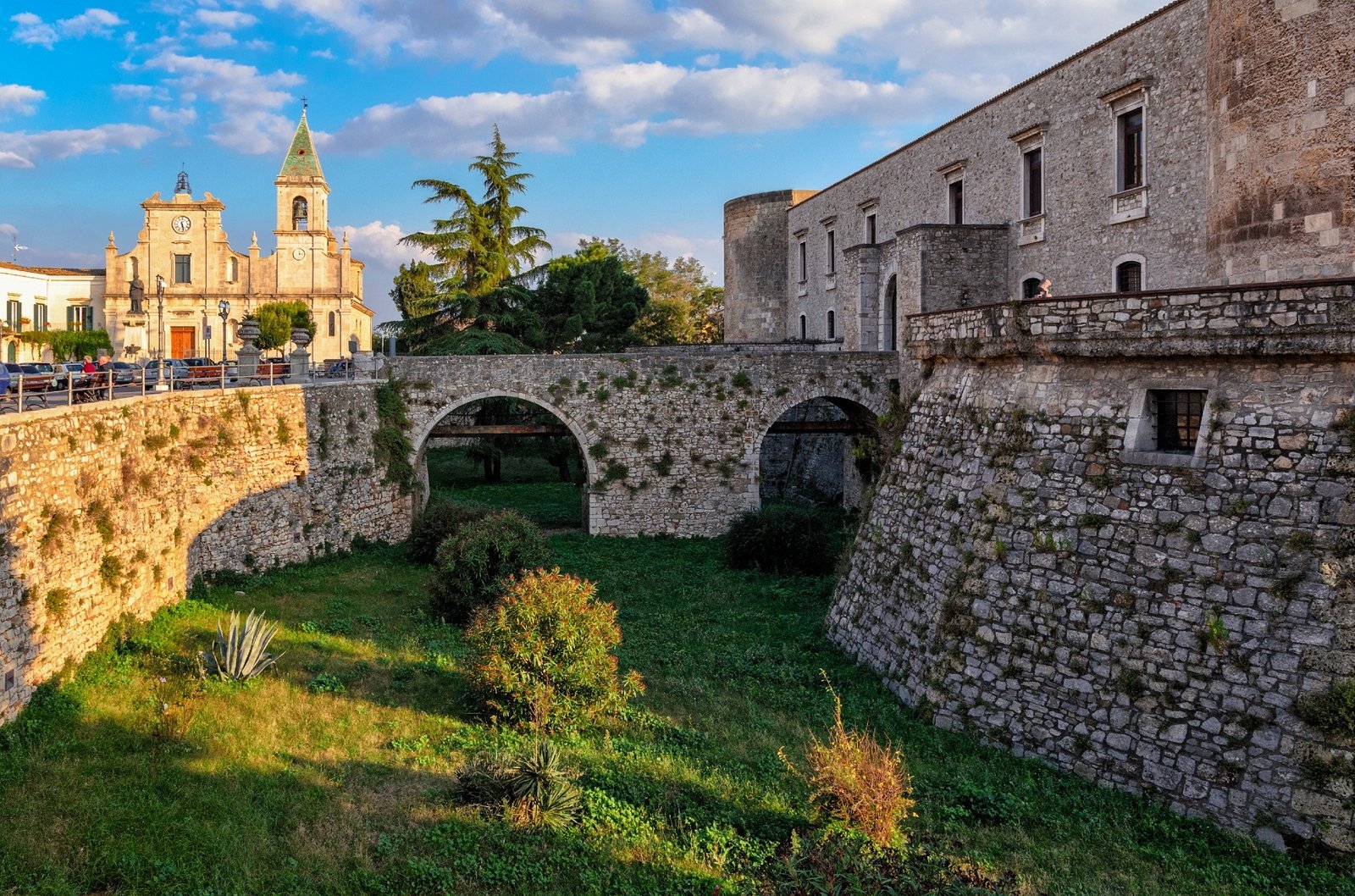Basilicata is a region that offers travellers unexpected surprises, hidden places and scenery unknown to most. One of these is the village of Venosa (PZ), which hosts us with its historical memories and envelops us in a suspended time just waiting to be explored.
Venosa

In the heart of the area called Vulture Melfese, on a hilly plateau, we find Venosa. The village, immersed in greenery and overlooking the valleys below, is a perfect place for a trip dedicated to history and good food. The town centre is located 400 metres above sea level and develops around the important and evocative historical testimonies that strongly characterise the town. Venosa, in fact, was founded by ancient Latin peoples, but in 291 B.C. it was conquered by the Romans, who made it a strategic point for controlling the Ofanto Valley and the Appian Way and, again in Roman times, the city was the birthplace of the poet Horace, something that is still a source of great pride for all the locals today. But one of the greatest points of interest (and perhaps the most evocative) is the Benedictine Abbey of the Trinity (5th century), which despite being in ruins (and perhaps, who knows, also because of this) retains an absolutely unique charm and an aura of mysticism that invites contemplation in a setting of rare beauty. From an urbanistic point of view, however, Venosa is a typical southern hinterland village: cobbled streets, small squares, poetic glimpses of low dwellings sometimes made of stone, and a fine heritage of churches and stately palaces that elegantly adorn the town's narrow streets. Everything here seems to be an invitation to relax and slowly discover the beauty of an area that is still little known and far from the crowded tourist routes, to be looked at and appreciated with new eyes.
The town of Venosa is small, but it is rich in history, culture and attractions, and to visit it is to immerse oneself in a thousand-year history enveloped in the relaxing silence of the small inland towns of Lucania. Definitely worth seeing, therefore, is the city: among the religious buildings and stately palaces, we recommend the beautiful 17th-century church of San Filippo Neri and San Rocco, dedicated to the saint for having freed the city from the plague in 1503; the elegant palazzo Calvino, the palazzo del Balì, whose construction dates back to the 14th century and is the seat of the religious order of the Knights of Malta, and the larger, more 'modern' palazzo Rapolla, which dates back to the 17th century. In the streets and small squares, there are several ancient fountains, such as the 15th-century San Marco fountain. The remains of the Longobard Castle and the Aragonese Castle, built in 1470 by Pirro del Balzo, are well worth a visit, while a must-see is the Archaeological Park, not far from the town centre, where you can discover the remains of Roman villas and baths, Horace's house and the marvellous Trinity Abbey, known as the Unfinished. But the beauties of Venosa do not end here. In fact, in this town there is the site of Notarchirico, the oldest prehistoric site in Basilicata, where you can see incredible historical traces belonging to homo erectus and various extinct animals. For those who want to travel around Venosa, there is no shortage of suggestive attractions such as the town of Lavello, Monticchio with its lakes and Melfi, a historic Norman city.
The villages and towns of Vulture-Melfese are distinguished by their rich and genuine cuisine, made with the simple ingredients of rural tradition. Two of the area's prides are extra virgin olive oil and Aglianico del Vulture DOC wine, whose origins go back to Roman times and perhaps even earlier, to Greek times. For the first courses, we find, among the most typical, a cornerstone of Lucanian and southern traditions: lagane (a pasta made from durum wheat flour) with chickpeas, but we also find cavatelli with turnip tops and past' e tar' cucòzz, or penne pasta seasoned with pumpkin corns, peeled tomatoes, garlic, parsley, olive oil and salt. In the main courses, on the other hand, strong flavours triumph, which, especially in winter (when it can even snow in Venosa) manage to warm you with their enveloping taste. In fact, we find the classic baccalà (dried cod) with cruschi peppers, I ciammarucchid, or snails seasoned with tomatoes and oregano, and a special goat meat stew: u cutturidd. Finally, let's move on to desserts. In Venosa, you absolutely must try pizzicanelli: typical rhombus-shaped biscuits made with cocoa, chocolate, almonds and cinnamon; cauzincidd', which are a pastry filled with chickpeas and chestnuts (these sweets are winter and eaten during the Christmas period); and pettole: small sugary pancakes.
The events to attend in Venosa are engaging in their authenticity and deeply rooted in the identity of the place. October is the grape harvest festival, an important occasion in a town like Venosa, deeply linked to wine production. On this occasion there are moments of aggregation with popular music, conferences on the art of wine-making and, of course, tasting of wines and typical products. In June, on the other hand, the Holy Trinity is celebrated, an appointment marked by religiousness (as it is a very heartfelt feast), but also by the traditional fair that takes place concomitantly. From 16 to 18 August, on the other hand, San Rocco, the patron saint of Venosa, is celebrated: during the event, the religious ceremony is flanked by musical events in the light of illuminations and, to conclude, the fireworks display. Lastly, we would like to mention a truly unique and special event, the Certamen Horatianum, a competition involving the translation and commentary of Horace's works in which Italian and European students attending classical studies compete. A truly unique event that certainly deserves to live on!

